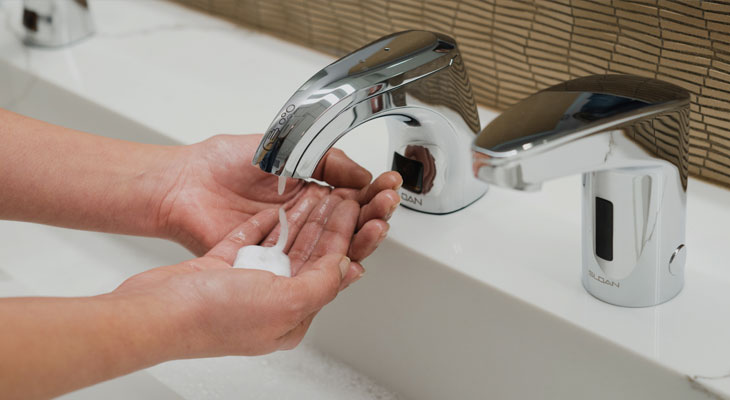
The Sanitary Benefits of Touchless Soap Dispensers
Eliminates Cross-Contamination
Most traditional soap dispensers feature a pump or lever mechanism that requires manual operation for proper use. For commercial restrooms that see high volumes of visitors per day, this repeated touching of the dispenser units can create a significantly unhygienic environment thanks to cross-contamination. As more bathroom patrons touch these devices, they leave behind bacteria, viruses, and other harmful contaminants. A future visitor may come in contact with these hazardous organisms, spreading illness to themselves and others throughout the building. Ultimately, touchless soap dispensers-along with other automatic restroom fixtures-create a more sanitary space for guests
Streamlines Maintenance
Traditional soap dispensers are, simply put, too messy. While an automatic commercial soap dispenser provides pre-programmed product quantities, manual units are unpredictable. An over-eager restroom patron may pump an excessive amount of soap, leaving behind run-off products for your custodial staff to clean up later. With a touchless device, visitors are limited to an appropriate, controllable amount of soap, ensuring less labor by streamlining maintenance for your janitors. It also promotes a more hygienic environment in periods between scheduled cleanings.
Reduces Consumption, Improves Hygiene
One non-sanitary benefit associated with touchless soap dispensers is the cost-effectiveness of controlled supply consumption. As mentioned before, these devices dispense pre-programmed amounts of soap. They're also extremely convenient, encouraging more bathroom patrons to properly wash their hands before leaving. Limiting dispensed soap quantities per visitor makes units more likely to remain filled and ready for use, further enhancing the bathroom's hygiene quality. Ultimately, this reduced soap consumption indirectly becomes smarter consumption as patrons practice improved hygiene without wasting your restroom's resources.


